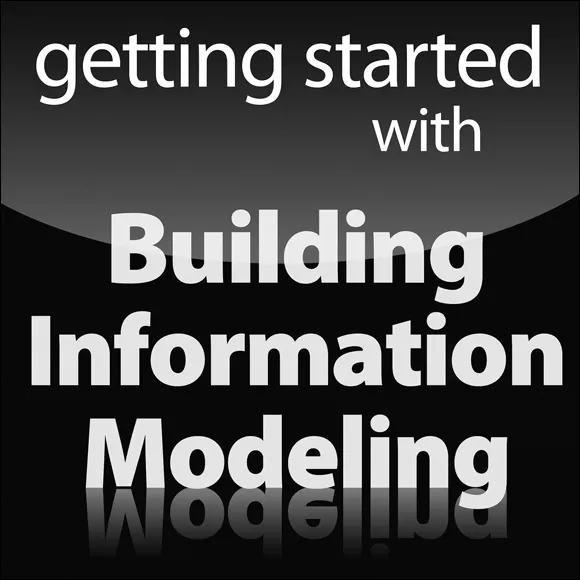
Building Information Modeling For Dummies
Stefan Mordue, Paul Swaddle, David Philp
- English
- ePUB (mobile friendly)
- Available on iOS & Android
Building Information Modeling For Dummies
Stefan Mordue, Paul Swaddle, David Philp
About This Book
Everything you need to make the most of building information modeling
If you're looking to get involved in the world of BIM, but don't quite know where to start, Building Information Modeling For Dummies is your one-stop guide to collaborative building using one coherent system of computer models rather than as separate sets of drawings. Inside, you'll find an easy-to-follow introduction to BIM and hands-on guidance for understanding drivers for change, the benefits of BIM, requirements you need to get started, and where BIM is headed.
The future of BIM is bright—it provides the industry with an increased understanding of predictability, improved efficiency, integration and coordination, less waste, and better value and quality. Additionally, the use of BIM goes beyond the planning and design phase of the project, extending throughout the building life cycle and supporting processes, including cost management, construction management, project management, and facility operation. Now heavily adopted in the U.S., Hong Kong, India, Singapore, France, Canada, and countless other countries, BIM is set to become a mandatory practice in building work in the UK, and this friendly guide gives you everything you need to make sense of it—fast.
- Demonstrates how BIM saves time and waste on site
- Shows you how the information generated from BIM leads to fewer errors on site
- Explains how BIM is based on data sets that describe objects virtually, mimicking the way they'll be handled physically in the real world
- Helps you grasp how the integration of BIM allows every stage of the life cycle to work together without data or process conflict
Written by a team of well-known experts, this friendly, hands-on guide gets you up and running with BIM fast.
Frequently asked questions
Information
Getting Started with Building Information Modeling






Defining Building Information Modeling (BIM)




Explaining BIM in Plain Terms
BIM is a process for combining information and technology to create a digital representation of a project that integrates data from many sources and evolves in parallel with the real project across its entire timeline, including design, construction, and in-use operational information.
Examining the A-B-Cs of BIM
- B: Because the B in BIM stands for building, think of this as the verb to build, and not just the noun, as if BIM was for just physical, discrete buildings. In fact, you can apply BIM to infrastructure, civil engineering, and landscape, along with large-scale public and private projects.You’re modeling a process, the act of building something. Refer to Chapter 2 for more information on what the B in BIM means and for help on BIM for infrastructure.

- I: The I in BIM is about understanding that unless you have information embedded throughout the project content, the work you’re producing is telling only half of the story.You don’t even really need to worry about the modeling in order to start applying BIM; you can put the processes and data exchanges into practice long before drawing work begins on a project. The real value in BIM is the ability to interrogate the model and find the data you need, when you need it. Turn to Chapter 3 for some great examples of information modeling from other industries, like aeronautics and automotive racing.
- M: The M stands for modeling. This aspect of BIM probably has the most history, and hundreds of programs for representing the built environment using 3D CAD techniques and virtual design and construction (VDC) are available. (In fact, the majority of free resources on BIM, especially in the United States, can put too much focus on the 3D modeling aspects of BIM.) Chapter 4 is about how the visual model should evolve in detail, but only as much as you require for the relevant output. The model should allow the output of whatever plan/section or perspective or walkthrough or 3D-printed model that you require.
Understanding the Requirements for BIM
- Digitization: You have to be confident that the future of the industry is digital. Think about how technology has evolved in most industries and how in your experience of the construction industry you may have noticed that it’s still traditional and paper-based. BIM implementation requires a change of direction, toward new tools and software and a digital future.
- The right foundations: In order to build advanced BIM processes, you need the firm bedrock of efficient systems for communication, information exchange, and data transfer. Think about what practical changes you may require and even the type of projects you focus on. We show you how you can describe your BIM readiness in terms of levels of maturity. Chapter 7 discusses the importance of having a foundation before you implement BIM.
- Process: What’s wrong with what you’re already doing? We hope you can see where you can make improvements in your current processes, and that moving toward BIM implementation should have a positive effect on your business. Some essential elements to collaboration exist, and in Chapter 8 we show you an example of best-practice work flow and an explanation of some of the key acronyms you’ll encounter.
- Technology: You need to ensure that you have the right technology to support your BIM aims and objectives. Technology includes software and hardware. Having the right technology enables you to work in a digital environment. In Chapter 21, we show you different types of BIM platforms and software, with some important examples and discussion points for when you have to make decisions.
- Training: All the processes, frameworks, and documents in the world won’t help if people don’t understand them ...

